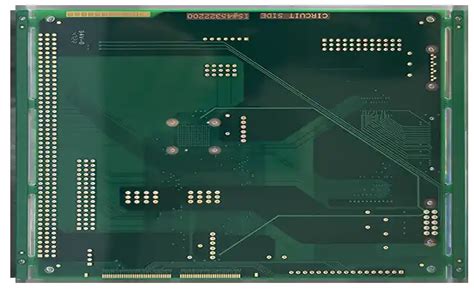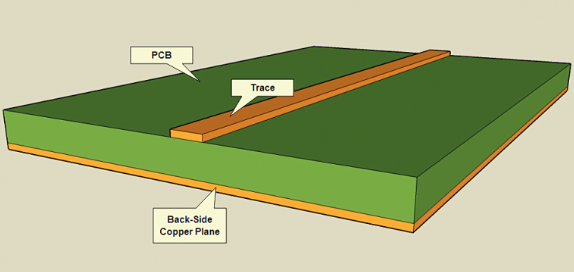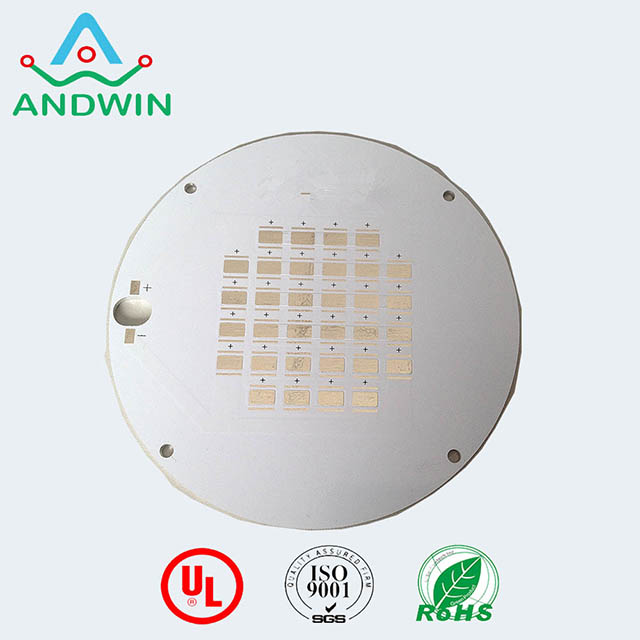Fr4 pcb rogers pcb aluminum pcb
Comparison Of FR4, Rogers, And Aluminum PCBs: Which Is Right For Your Project?
When embarking on the design and development of electronic devices, selecting the appropriate printed circuit board (PCB) material is crucial. The choice of PCB material can significantly impact the performance, reliability, and cost-effectiveness of the final product. Among the most commonly used materials are FR4, Rogers, and aluminum, each offering distinct characteristics that cater to different applications and requirements. Understanding the differences between these materials can help in making an informed decision for your project.
FR4 is perhaps the most widely used PCB material, known for its versatility and cost-effectiveness.
It is a composite material made from woven fiberglass cloth with an epoxy resin binder that is flame resistant. The “FR” in FR4 stands for “flame retardant,” and the “4” denotes the grade of the material. FR4 PCBs are favored for their excellent mechanical strength, good electrical insulation properties, and ease of manufacturing. They are suitable for a wide range of applications, from consumer electronics to industrial equipment. However, FR4 may not be the best choice for high-frequency applications due to its relatively high dielectric constant and loss tangent, which can lead to signal integrity issues.
In contrast, Rogers PCBs are designed to meet the demands of high-frequency and high-performance applications
. Rogers Corporation produces a variety of laminate materials that are engineered to provide superior electrical performance. These materials typically have a lower dielectric constant and loss tangent compared to FR4, making them ideal for radio frequency (RF) and microwave circuits. Rogers PCBs are often used in telecommunications, aerospace, and defense industries, where signal integrity and thermal management are critical. While they offer excellent performance, Rogers materials tend to be more expensive than FR4, which can be a consideration for budget-conscious projects.
Aluminum PCBs, on the other hand, are known for their exceptional thermal conductivity and are often used in applications where heat dissipation is a primary concern.
These PCBs consist of a thin layer of thermally conductive dielectric material bonded to an aluminum base. The aluminum substrate acts as a heat sink, efficiently dissipating heat away from critical components. This makes aluminum PCBs particularly suitable for LED lighting, power electronics, and automotive applications, where managing heat is essential to ensure reliability and longevity. However, aluminum PCBs may not be as versatile as FR4 or Rogers in terms of electrical performance, and their mechanical properties can limit their use in certain applications.
When deciding which PCB material is right for your project, it is important to consider the specific requirements and constraints of your application.
If cost is a primary concern and the application does not involve high frequencies or significant heat generation, FR4 may be the most suitable choice. For projects that demand high-frequency performance and superior signal integrity, Rogers PCBs offer the necessary electrical characteristics, albeit at a higher cost. Meanwhile, if thermal management is a critical factor, aluminum PCBs provide an effective solution for dissipating heat.
In conclusion, the selection of PCB material should be guided by a thorough understanding of the application’s needs, balancing performance, cost, and other factors. By carefully evaluating the characteristics of FR4, Rogers, and aluminum PCBs, designers can make informed decisions that align with their project’s objectives and constraints, ultimately leading to successful and reliable electronic products.

Advantages And Disadvantages Of Using FR4, Rogers, And Aluminum PCBs In Electronics
In the realm of electronics, the choice of printed circuit board (PCB) material is crucial, as it significantly impacts the performance, cost, and reliability of the final product. Among the most commonly used materials are FR4, Rogers, and aluminum, each offering distinct advantages and disadvantages. Understanding these can guide engineers and designers in selecting the most appropriate material for their specific applications.
FR4, a composite material made of woven fiberglass cloth with an epoxy resin binder, is the most widely used PCB substrate.
One of its primary advantages is its cost-effectiveness. FR4 is relatively inexpensive compared to other materials, making it an attractive option for a wide range of applications, from consumer electronics to industrial equipment. Additionally, FR4 offers good electrical insulation and mechanical strength, which are essential for maintaining the integrity of electronic circuits. However, FR4 has its limitations, particularly in high-frequency applications. Its dielectric properties are not as favorable as those of other materials, which can lead to signal loss and reduced performance in RF and microwave circuits. Furthermore, FR4 has a relatively low thermal conductivity, which can be a disadvantage in applications where heat dissipation is critical.
Transitioning to Rogers PCBs, these are known for their superior performance in high-frequency applications.
Rogers materials, such as RO4000 and RO3000 series, offer excellent dielectric properties, which minimize signal loss and ensure reliable performance in RF and microwave circuits. This makes Rogers PCBs a preferred choice in telecommunications, aerospace, and defense industries, where high-frequency signals are prevalent. Moreover, Rogers materials exhibit better thermal stability compared to FR4, allowing them to maintain performance over a wider temperature range. Despite these advantages, Rogers PCBs come with a higher cost, which can be a significant consideration for budget-conscious projects. Additionally, the processing and handling of Rogers materials require specialized knowledge and equipment, which can further increase production costs and complexity.
On the other hand, aluminum PCBs are renowned for their exceptional thermal management capabilities.
Comprising a metal base layer, typically aluminum, these PCBs are designed to efficiently dissipate heat away from critical components. This makes them ideal for applications with high power requirements, such as LED lighting, power supplies, and automotive electronics.
The robust construction of aluminum PCBs also provides enhanced mechanical stability, which is beneficial in environments subject to vibration and mechanical stress.
However, the use of aluminum as a substrate can introduce challenges in terms of electrical insulation. The metal base must be adequately insulated from the circuit layer to prevent short circuits, which can complicate the design and manufacturing process. Additionally, while aluminum PCBs offer excellent thermal performance, they are generally more expensive than FR4, which may limit their use in cost-sensitive applications.
In conclusion, the choice between FR4, Rogers, and aluminum PCBs depends on a careful consideration of the specific requirements of the application. FR4 offers a cost-effective solution for general-purpose applications but may fall short in high-frequency or high-heat scenarios. Rogers PCBs provide superior performance in RF and microwave applications but at a higher cost and complexity. Meanwhile, aluminum PCBs excel in thermal management but require careful design to ensure electrical insulation. By weighing these advantages and disadvantages, engineers can make informed decisions that optimize the performance and cost-effectiveness of their electronic designs.

Thermal Management In PCBs: How FR4, Rogers, And Aluminum Materials Perform
In the realm of printed circuit boards (PCBs), thermal management is a critical consideration that significantly impacts the performance and reliability of electronic devices. As electronic components become increasingly powerful and compact, the need for effective heat dissipation becomes paramount. Among the various materials used in PCB manufacturing, FR4, Rogers, and aluminum stand out due to their distinct thermal management properties. Understanding how these materials perform in terms of thermal management can guide engineers and designers in selecting the most appropriate substrate for their specific applications.
FR4, a widely used material in PCB manufacturing, is a composite made of woven fiberglass cloth with an epoxy resin binder.
It is renowned for its excellent mechanical strength and electrical insulation properties. However, when it comes to thermal management, FR4 has certain limitations. Its thermal conductivity is relatively low, typically around 0.3 to 0.4 W/mK, which means it is not particularly efficient at dissipating heat. Consequently, in high-power applications, FR4-based PCBs may require additional thermal management solutions, such as heat sinks or thermal vias, to prevent overheating and ensure reliable operation.
In contrast, Rogers materials, often used in high-frequency and microwave applications, offer superior thermal performance.
These materials are engineered to provide better thermal conductivity, often exceeding 0.6 W/mK, which allows for more efficient heat dissipation. Rogers PCBs are particularly advantageous in applications where signal integrity and thermal management are critical, such as in RF and microwave circuits. The enhanced thermal properties of Rogers materials help maintain stable operating temperatures, thereby improving the overall performance and longevity of the electronic components.
Aluminum PCBs, also known as metal-core PCBs, represent another significant advancement in thermal management.
These PCBs incorporate a metal substrate, typically aluminum, which provides excellent thermal conductivity, often in the range of 1.0 to 2.0 W/mK or higher. This high thermal conductivity allows aluminum PCBs to effectively dissipate heat away from critical components, making them ideal for high-power applications such as LED lighting, power supplies, and automotive electronics. The metal core acts as a heat spreader, reducing the thermal resistance and enhancing the overall thermal performance of the PCB.
While each of these materials has its own advantages and limitations, the choice between FR4, Rogers, and aluminum PCBs ultimately depends on the specific requirements of the application.
For instance, in applications where cost is a primary concern and thermal demands are moderate, FR4 may be a suitable choice. However, for high-frequency applications where both thermal management and signal integrity are crucial, Rogers materials may be more appropriate. On the other hand, in high-power applications where efficient heat dissipation is essential, aluminum PCBs offer a compelling solution.
In conclusion, the thermal management capabilities of FR4, Rogers, and aluminum PCBs vary significantly, each offering unique benefits that cater to different application needs. By carefully considering the thermal requirements and performance criteria of their projects, engineers can make informed decisions about which PCB material will best meet their needs, ensuring optimal performance and reliability of their electronic devices. As technology continues to advance, the importance of effective thermal management in PCBs will only grow, underscoring the need for ongoing innovation and material development in this critical area.

Cost Analysis: FR4 Vs. Rogers Vs. Aluminum PCBs In Manufacturing
In the realm of printed circuit board (PCB) manufacturing, selecting the appropriate material is crucial for balancing performance and cost. Among the most commonly used materials are FR4, Rogers, and aluminum, each offering distinct advantages and challenges. Understanding the cost implications of these materials is essential for manufacturers aiming to optimize their production processes while meeting specific performance requirements.
FR4, a composite material made of woven fiberglass cloth with an epoxy resin binder, is the most widely used substrate in PCB manufacturing.
Its popularity stems from its excellent mechanical strength, electrical insulation properties, and cost-effectiveness. The affordability of FR4 makes it an attractive option for a wide range of applications, particularly in consumer electronics where cost constraints are significant. However, while FR4 is economical, it may not be suitable for high-frequency applications due to its relatively high dielectric constant and loss tangent, which can affect signal integrity.
Transitioning to Rogers PCBs, these are known for their superior performance in high-frequency applications.
Rogers materials, such as the RO4000 series, are engineered to offer low dielectric loss, stable dielectric constant, and excellent thermal management. These properties make Rogers PCBs ideal for applications in telecommunications, aerospace, and advanced computing where signal integrity is paramount. However, the advanced properties of Rogers materials come at a higher cost compared to FR4. The manufacturing process for Rogers PCBs is more complex, requiring specialized equipment and expertise, which further contributes to the increased cost. Consequently, while Rogers PCBs offer significant performance benefits, their higher price point may be a limiting factor for cost-sensitive projects.
In contrast, aluminum PCBs present a unique proposition by combining thermal management capabilities with structural integrity.
Aluminum PCBs are particularly favored in applications where heat dissipation is critical, such as in LED lighting and power electronics. The aluminum substrate acts as a heat sink, efficiently dissipating heat away from critical components, thereby enhancing the reliability and lifespan of the device. While aluminum PCBs are generally more expensive than FR4 due to the cost of the metal substrate and the additional processing steps required, they can offer cost savings in the long run by reducing the need for additional cooling solutions and improving product durability.
When comparing the cost implications of these materials, it is essential to consider the specific requirements of the application.
For projects where budget constraints are paramount and the performance demands are moderate, FR4 remains a cost-effective choice. On the other hand, for applications demanding high-frequency performance and minimal signal loss, the investment in Rogers PCBs may be justified despite the higher initial cost. Meanwhile, aluminum PCBs offer a compelling option for applications where thermal management is a priority, potentially offsetting their higher material costs through enhanced performance and reduced cooling requirements.
In conclusion, the decision between FR4, Rogers, and aluminum PCBs should be guided by a comprehensive cost-benefit analysis that considers both the immediate material costs and the long-term performance benefits. By carefully evaluating the specific needs of the application and the associated cost implications, manufacturers can make informed decisions that align with their technical and financial objectives.







